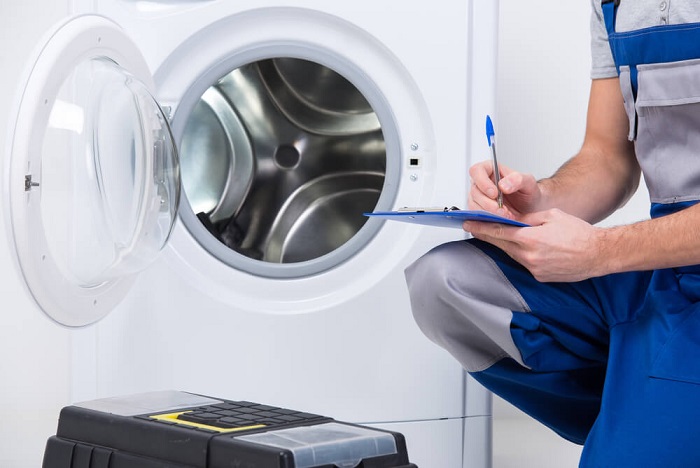In an era where both time and money are precious, ensuring the longevity of your household appliances is more important than ever. Laundry machines, in particular, are indispensable, yet they often fall victim to neglect, leading to unnecessary wear and tear. However, with a proactive approach to maintenance, you can significantly extend the life of your laundry machine, ensuring it runs efficiently for years to come. This comprehensive guide will walk you through essential preventive maintenance tips that can help you avoid frequent repairs and save money in the long run.
1. Regular Cleaning: The Foundation of Maintenance
a. Exterior and Drum Cleaning
Dirt, detergent residues, and fabric softener can accumulate over time, affecting your machine’s performance and potentially damaging your clothes. Wipe down the exterior with a damp cloth regularly and clean the drum at least once a month using a mild detergent or a specific washing machine cleaner. For a natural solution, running an empty hot water cycle with two cups of white vinegar can help break down residues.
b. Gasket and Dispenser Drawer
Front-loading machines have rubber gaskets that seal the door and prevent water from leaking. These gaskets can harbor mold and mildew, which not only smell bad but can also deteriorate the rubber over time. Wipe the gasket with a damp cloth regularly and leave the door ajar between uses to allow air circulation. Similarly, remove and clean the detergent dispenser drawer regularly to prevent buildup.
2. Filter Maintenance: Ensuring Unobstructed Flow
a. Lint Filter
Just like in dryers, some washing machines have lint filters. If yours does, cleaning it regularly is crucial to prevent clogs and ensure efficient water drainage. Check your machine’s manual to locate the filter and clean it as recommended.
b. Drain Pump Filter
Front loaders typically have a drain pump filter to catch small items and prevent them from reaching the pump. Cleaning this filter every few months can prevent clogs and drainage issues. Make sure to place a towel underneath when opening the filter as some water may spill out.
3. Water Hoses: Checking for Integrity
Over time, the water hoses connected to your washing machine can become brittle, leading to leaks or bursts. Inspect the hoses every few months for signs of wear, such as cracks or bulges. It’s recommended to replace these hoses every 3-5 years, even if they don’t show visible signs of deterioration. Opting for stainless steel hoses can offer more durability than standard rubber hoses.
4. Balanced Loads: Protecting Your Machine’s Mechanics
An unbalanced load can cause your machine to shake violently, putting stress on its components and leading to premature wear. Always try to wash similarly weighted items together and avoid overloading. If you notice excessive vibration, pause the cycle and redistribute the load evenly. Keeping your machine level on the ground also minimizes stress on its structure and components.
5. Detergent Use: Less Is Often More
Using too much detergent can lead to excess suds, which puts extra strain on your machine’s pump and motor. Furthermore, residue from the detergent can build up inside your machine, potentially leading to malfunctions. Always use the recommended amount of detergent for your load size and water hardness. Consider using high-efficiency (HE) detergents for HE machines, as these are designed to produce fewer suds and are more easily rinsed away.
6. Regular Inspections and Professional Servicing
While regular cleaning and maintenance can go a long way in preserving your laundry machine’s lifespan, annual inspections by a professional can catch issues you might miss. Laundry machine repair services can inspect electrical connections, test water inlet valves, and ensure the drum and motor are functioning correctly. This can help identify wear and tear before it leads to major repairs.
7. Understanding Your Machine
Familiarize yourself with your laundry machine’s manual. Each machine has its own set of maintenance recommendations and schedules. Knowing the specifics of your model can help you provide better care and prevent misuse.
Signs of Wear and Tear to Watch For
Despite your best efforts, wear and tear are inevitable. Be on the lookout for unusual noises during operation, such as grinding or banging, which could indicate a problem with the drum or motor. Water leaks, slow drainage, and a failure to spin are also signs that your machine may need professional attention.
Conclusion
Incorporating these preventive maintenance tips into your routine can significantly extend the life of your laundry machine, ensuring it runs efficiently and effectively for as long as possible. Not only does this approach save you money on potential repairs and replacements, but it also contributes to the sustainable use of appliances by reducing waste. Remember, the key to a long-lasting laundry machine is not just in how you use it, but also in how well you take care of it.
